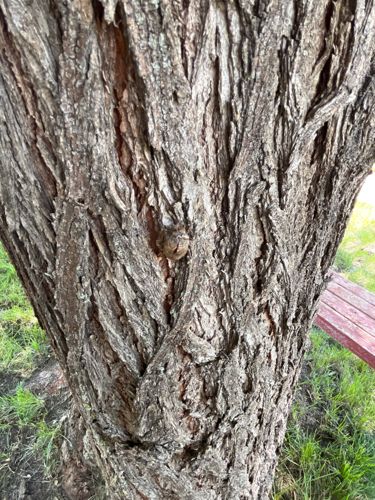Moth (likely in the Erebidae family)
Scientific Name: N/A (Species not identifiable from image, but likely an Erebidae)
Order & Family: Order: Lepidoptera, Family: Erebidae
Size: Varies widely within the family, from small moths with wingspans of less than 1 cm to large species with wingspans exceeding 10 cm. The moth in the image appears to be a medium-sized individual, likely within the 2-5 cm wingspan range.

Natural Habitat
The habitat of moths in the Erebidae family is diverse, ranging from forests, woodlands, and grasslands to urban and suburban areas. They are often found near their host plants or sources of light at night. The individual in the image is well-camouflaged on tree bark, suggesting a woodland or forested habitat, or close to trees in an urban setting.
Diet & Feeding
Adult moths often feed on nectar from flowers, tree sap, or decaying fruit, using their proboscis. Some species may not feed as adults. The larvae (caterpillars) are herbivorous, feeding on the leaves, stems, or roots of specific host plants.
Behavior Patterns
Moths in the Erebidae family are primarily nocturnal, attracted to light at night. Many species exhibit cryptic coloration, blending in with their surroundings, such as tree bark, to avoid predators during the day. Their larvae (caterpillars) are often herbivores and depending on the species, may be solitary or gregarious. Adult moths typically focus on reproduction.
Risks & Benefits
Generally, moths are beneficial as pollinators of various plants, especially nocturnal flowers. Their larvae are a food source for many animals, including birds, bats, and other insects. Some caterpillar species can be considered pests if they feed on agricultural crops or ornamental plants in large numbers, causing defoliation. A few species may have urticating hairs on their caterpillars that can cause skin irritation or allergic reactions in humans, but this is not typical for all Erebidae.
Identified on: 8/24/2025